My research encompasses two main themes. The first is the systematics and phylogeography of the Monotropoideae (Ericaceae), and the second is a floral disjunction between southern Oregon and the northeast Olympic Mountains in Washington.
Before we go any further, I’d like to define a few of those terms for the uninitiated…
systematics is a field of study dedicated to the classification and nomenclature of biodiversity. Historically this has been carried out in a variety of different ways, but today this pursuit is concerned with evolutionary relationships and diversification. This work is done with the help of phylogenetic methods, a set of tools that enable us to visualize evolutionary relationships with the help of phylogenies. Phylogenies can be thought of as bifurcating “family trees” for species.
phylogeography is a field of study involved with the process of lineage divergence. In other words, what happens as lineages begin to split apart, and what forces are responsible? Here we consider how population distributions across space and time, and the related factors of geography and climate, have influenced genetic exchange between populations.
A disjunction in this context refers to a substantial geographical gap between populations of the same or closely related species. When one or a small number of populations are isolated far away from the rest, these are called disjunct. Disjunctions can be the result of long distance dispersal events or vicariance, in which a continuous distribution of populations becomes fractured.
So what?
Why should we care about any of this? Well, it is probably obvious that classification and nomenclature help us communicate clearly about specific organisms. This work also helps us to think about organisms in an evolutionary context- our taxonomic classification system tells us something right away about which species are related to one another and it also helps clarify which features are conserved and shared among the lineages. More specific taxonomic ranks also aid conservation by clarifying lineages that are unique to certain ecological conditions or areas, which can inform protection and restoration initiatives.
When we know what we are looking at in the field, we may begin to wonder about the distribution of populations. How is it that particular species assemblages have come to thrive, persist, or be extirpated from various localities? Why are some populations isolated from the rest? What makes certain genotypes “rare” and where might we expect to find them? When do we consider a unique population a new species? This is where phylogeography and the related discipline, biogeography, come in.
In an ideal world, we would have a complete fossil record of every living organism on earth and we would be able to use this fossil record to map the historical distribution of all extant (= still living) species. In reality, very few organisms fossilize well and of the fossils that do exist, only a small fraction are accessible to us. Biological disjunctions are clues that help us begin to answer some of the questions posed in the previous paragraph. Geologists and biologists work together to understand how the biota of various regions has responded to geological and climatic events of the past. This research provides insight into how species might respond to current and future events, such as climate change and large scale disturbance. By understanding where unique populations or biologically rich areas are, we can make informed decisions related to conservation priorities.
The Monotropoideae
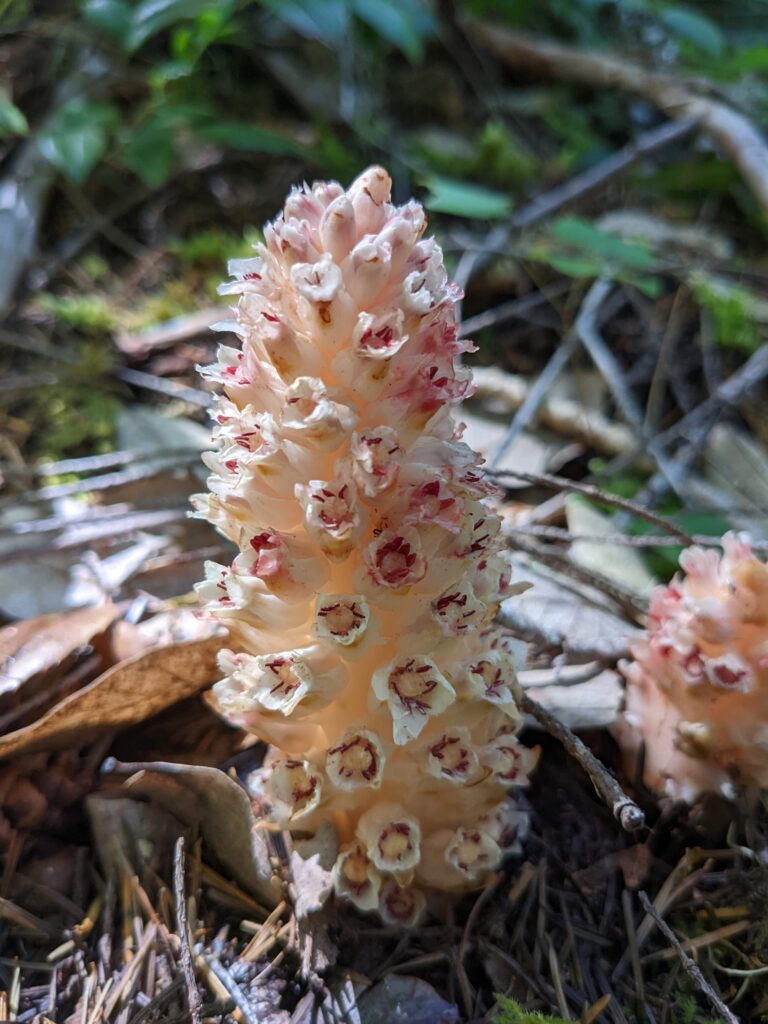
Pleuricospora fimbriolata 
Pityopus californicus 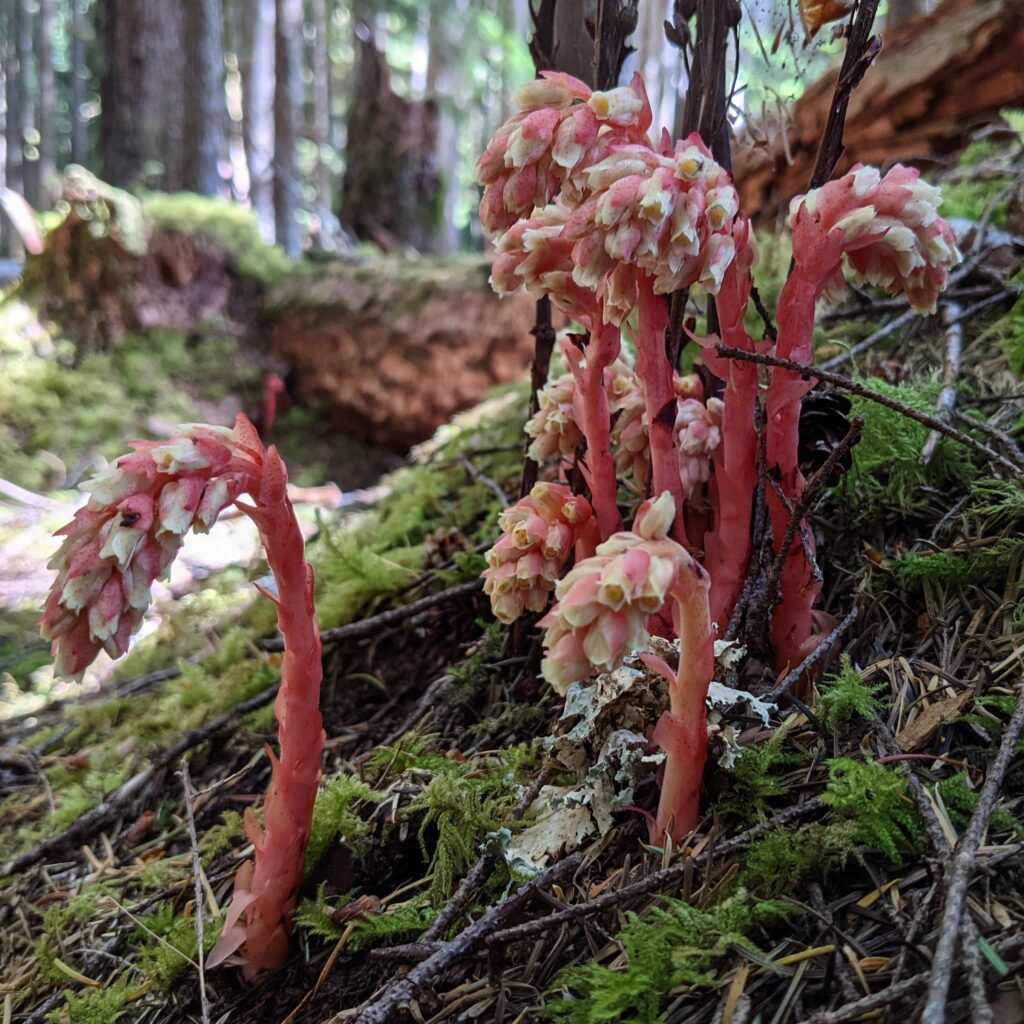
Hypopitys monotropa 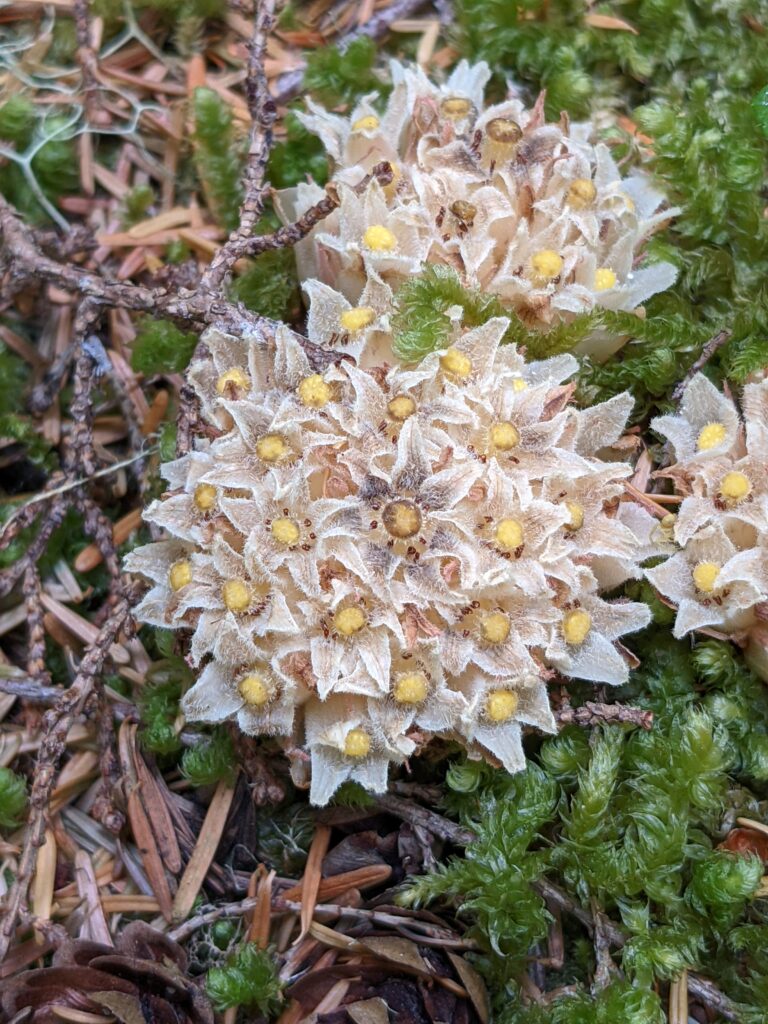
Hemitomes congestum 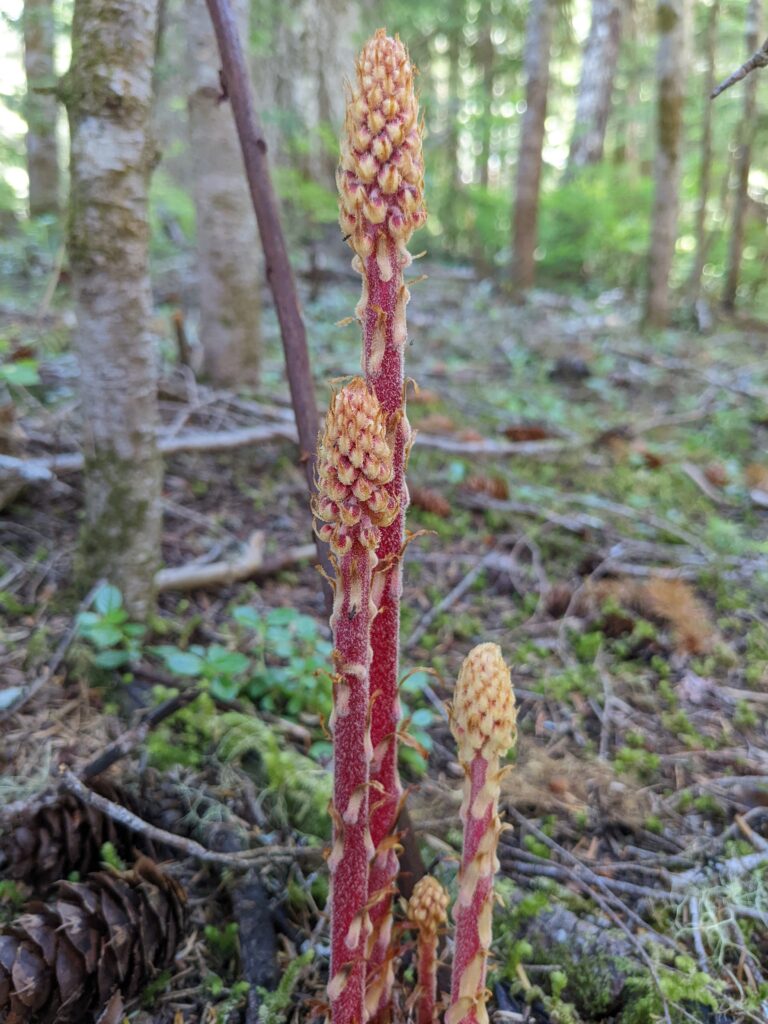
Pterospora andromedea 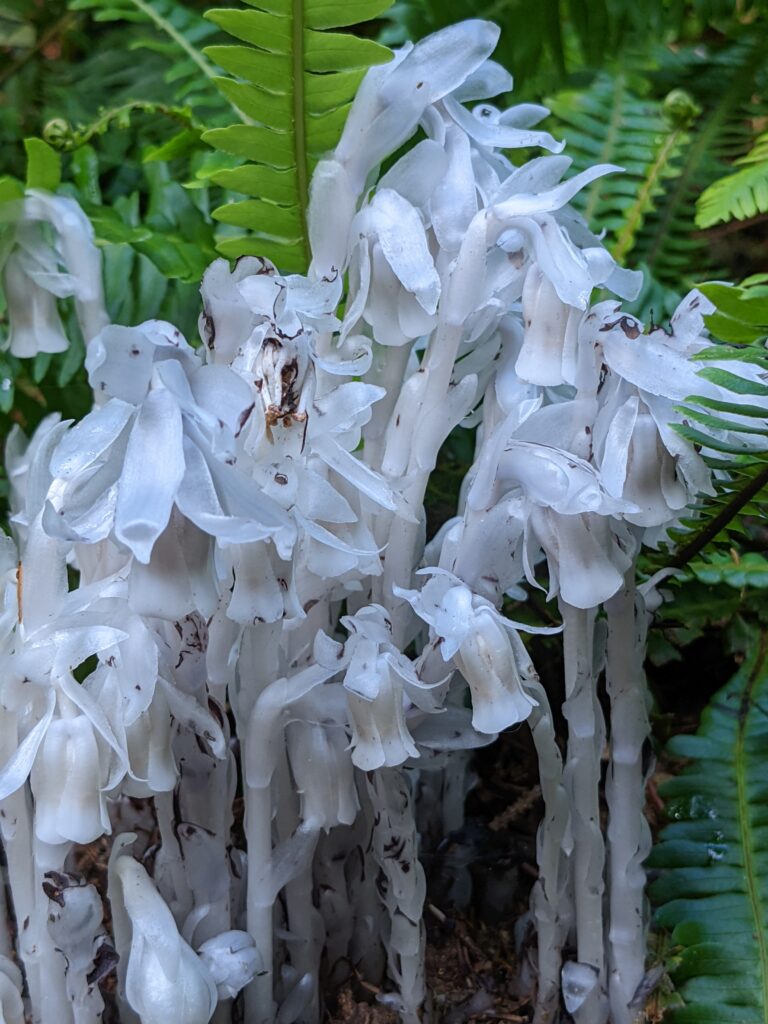
Monotropa uniflora 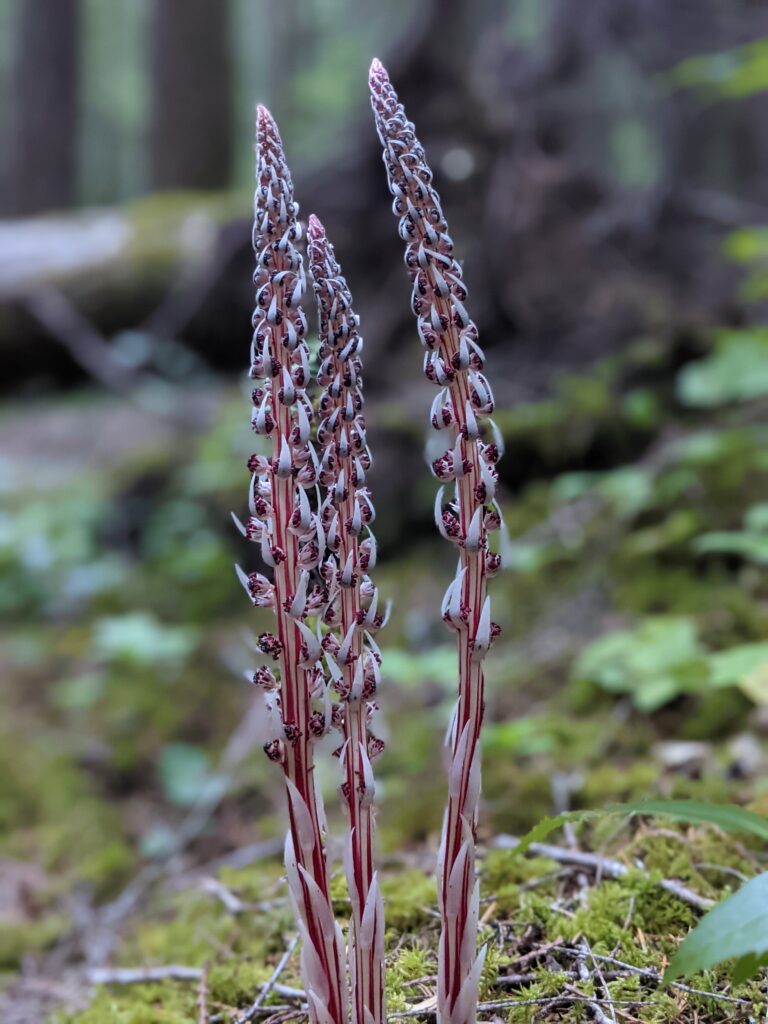
Allotropa virgata
The Monotropoideae is a subfamily in the Ericaceae (blueberry family). All the plants in this subfamily are obligate parasites of fungi- we call this mycoheterotrophy. The gallery to the left features the seven members that I encounter most often in the field. You may notice that they aren’t green- that’s because they no longer have functional plastomes and cannot photosynthesize. Their center of biodiversity is in the Pacific Northwest USA, where eight of the eleven genera in the subfamily can be found, six of which are endemic to the region. Here in Ohio, we have two representatives- Hypopitys monotropa and Monotropa uniflora- have you seen them on your outings?
